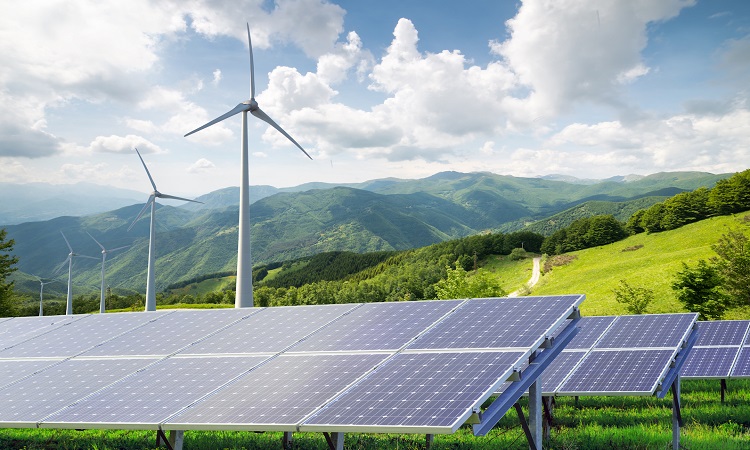Solar and wind power produced five percent (22.28 percent) of all electricity used in the EU in 2022, beating gas (19.91 percent) at first in a field dominated by hydroelectric and nuclear (32.04 percent) as per data released this week from Ember, the Ember Energy think-tank.
“Europe can avoid the most severe from the crisis of energy,” Ember’s director in Data Perspectives, Dave Jones, in a statement noting that “the 2022 “stocks” only created a tiny shock in the production of electricity coal, and a massive increase in support for renewable energy” therefore “any concerns about the coal market rebounding are gone.
Even though the energy crisis boosted production using coal, the rise in this fossil fuel used to generate electricity was only 1.5 points compared to the prior year, which was 15.99 percent of the electricity generated in the community block. This is with a likelihood of being cut by 6% during the final quarter of 2022.
In reality, the 26 power plants that are coal-fired in standby have been operating at an average of 18 percent of their capacity. only 1/3 of the 22 million tonnes of imported coal into the EU this year was used.
However, carbon dioxide emissions resulting from the electricity sector in the EU were up 3.9 percent (26 million tons CO2), The largest absolute increase recorded by Germany (13 MtCO2, +6.1%). , Spain (7.6 MtCO2, +19 percent), Italy (6.9 MtCO2, +9.3%), and Bulgaria (4.7 MtCO2 +23 percent). However, there was a decrease in Poland, the second biggest emission source in Europe. EU ( -3.7 MtCO2, -2.9%).
Record RENEWABLES
Solar energy production will grow by 24% by 2022, and wind power will increase by 33% across the EU. This resulted in savings that totaled “10,000 million euros” in gas, per Ember.
Twenty-seven of the 27 Member States broke their records, Spain among them, due to the political administration and the residents who put solar panels onto their rooftops.
The country that produced the most significant proportion of its solar energy by 2022 was the Netherlands (14 percent), which has taken over the top spot from Spain (12 percent). Spain was the most potent block of newly installed electricity (+21 percent); however, the Netherlands increased that by a third (51 percent).
The electricity demand also decreased by 7.7% in comparison to 2021 overall and by 8.5 percent in the final quarter of the year, during which the EU was faced with a “triple” crisis within the sector, which included the sharp decline in Russian gas supplies, and historically lower levels for nuclear (paralysis in a part of the French atomic park) and hydraulics (meteorology).
The nuclear explosion in France in 2022, which was transformed from an exporter to becoming a Net importer of electric power from Germany, Spain, and the United Kingdom, shows “how crucial interconnections are for achieving a secure electricity supply.”
This also explains, according to Ember, the increase in the demand for gas to produce energy in Spain (22 percent) in addition to France (29 percent) as well as France, which “probably would not have been as high without the huge losses of the nuclear power industry in France which led to fewer exports into Spain.”
The electricity sector in both countries also felt the effects of the most severe drought in the past 500 years of Europe, which slowed down the hydroelectric power generation by 23 percent for France and 37 percent for Spain.
In the EU, the generation of gas rose by 0.8 percent, and that from fossil fuels generally by 3 percent.
The think tank says production using fossil fuels “could fall by 20% by 2023” and “with the right incentives, solar energy could surpass all records,” predicted the CEO of the community-based company Solar Power Europe, Walburga.
Ember estimates that coal’s price will fall and gas prices, anticipated to be more costly than coal “at least through 2025,” will drop even more dramatically as a result of the recovery in the solar and wind industry and due to the revival of hydroelectric as well as French nuclear sectors.
“It is clear that the decrease in demand and an increase in solar and wind generation could be a viable alternative to fossil fuels for the electricity sector. It shouldn’t take the gas crisis as a reason not to understand the issue and take action,” stressed the energy policy coordinator of the Climate Action Network, Elif Gunduzyeli.
The president of the WindEurope wind energy group, Giles Dickson, welcomed the findings but noted that “much more must be done to meet” those renewable energy goals and demanded an industrial policy based on clean energy as well as to “correctly” overhaul energy markets.

Email: ben@satprwire.com Phone: +44 20 4732 1985
Ben has been listening to the technology news for quite some time that he needs just a single read to get an idea surrounding the topic. Ben is our go-to choice for in-depth reviews as well as the normal articles we cover on a normal basis.



